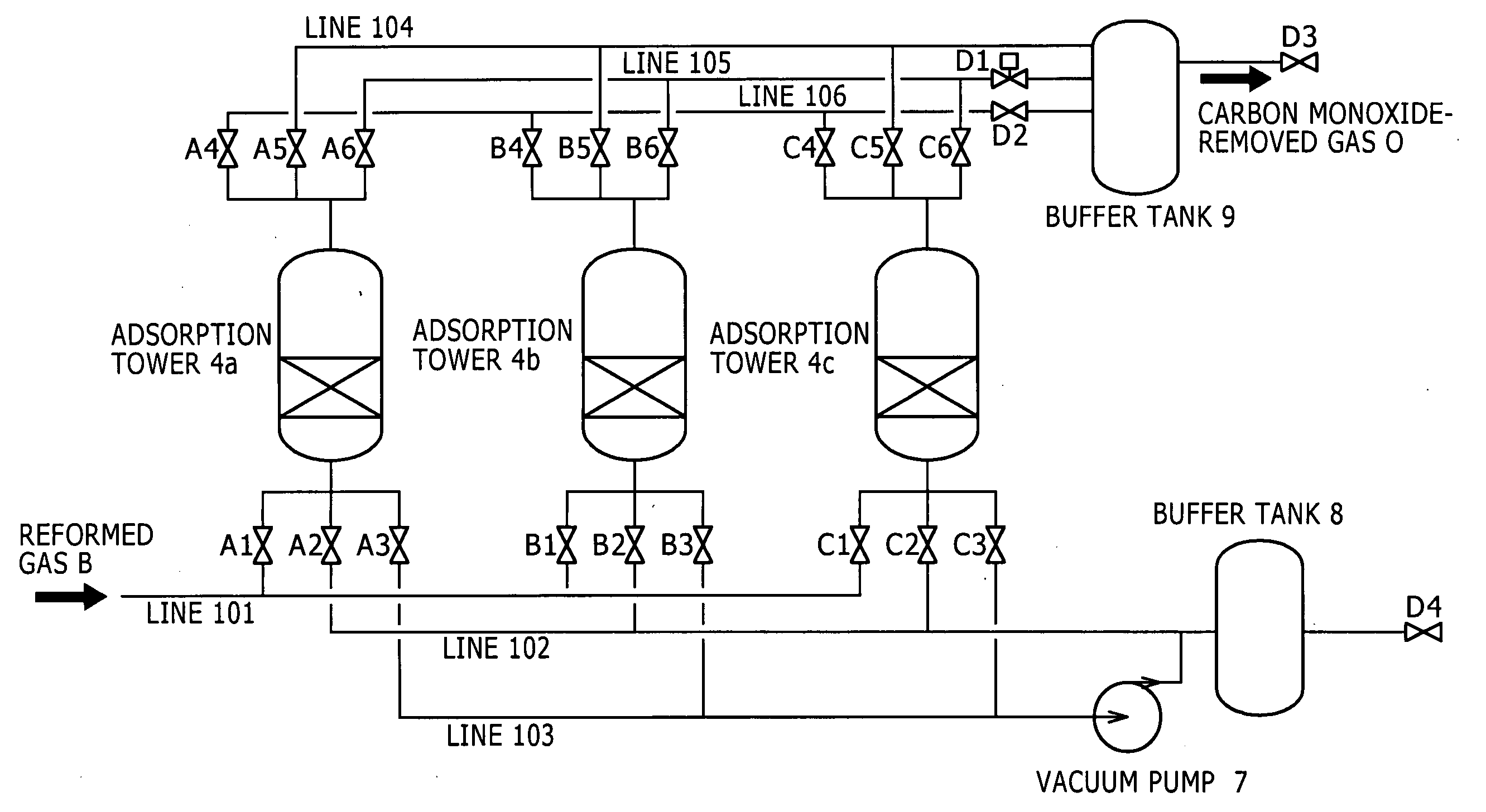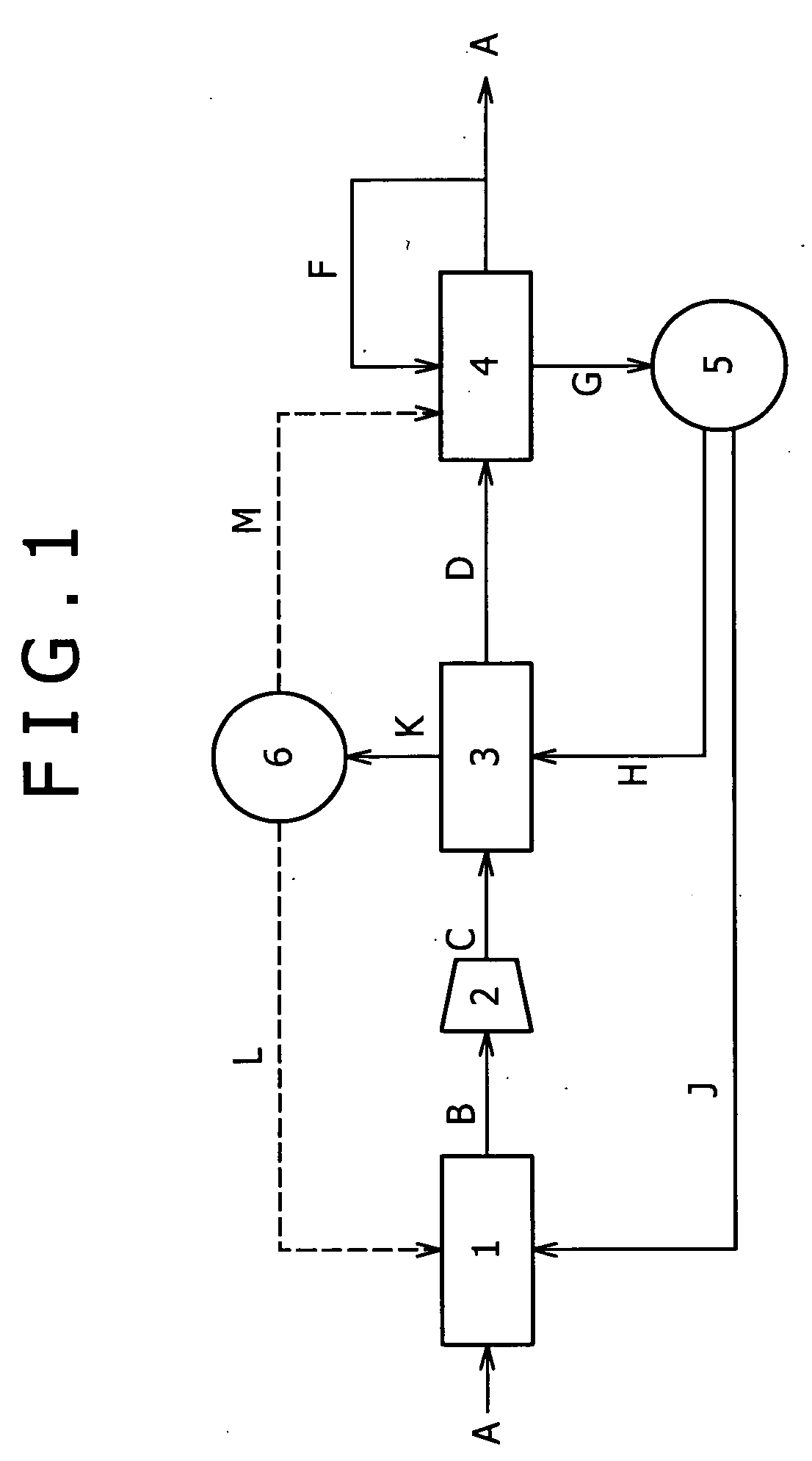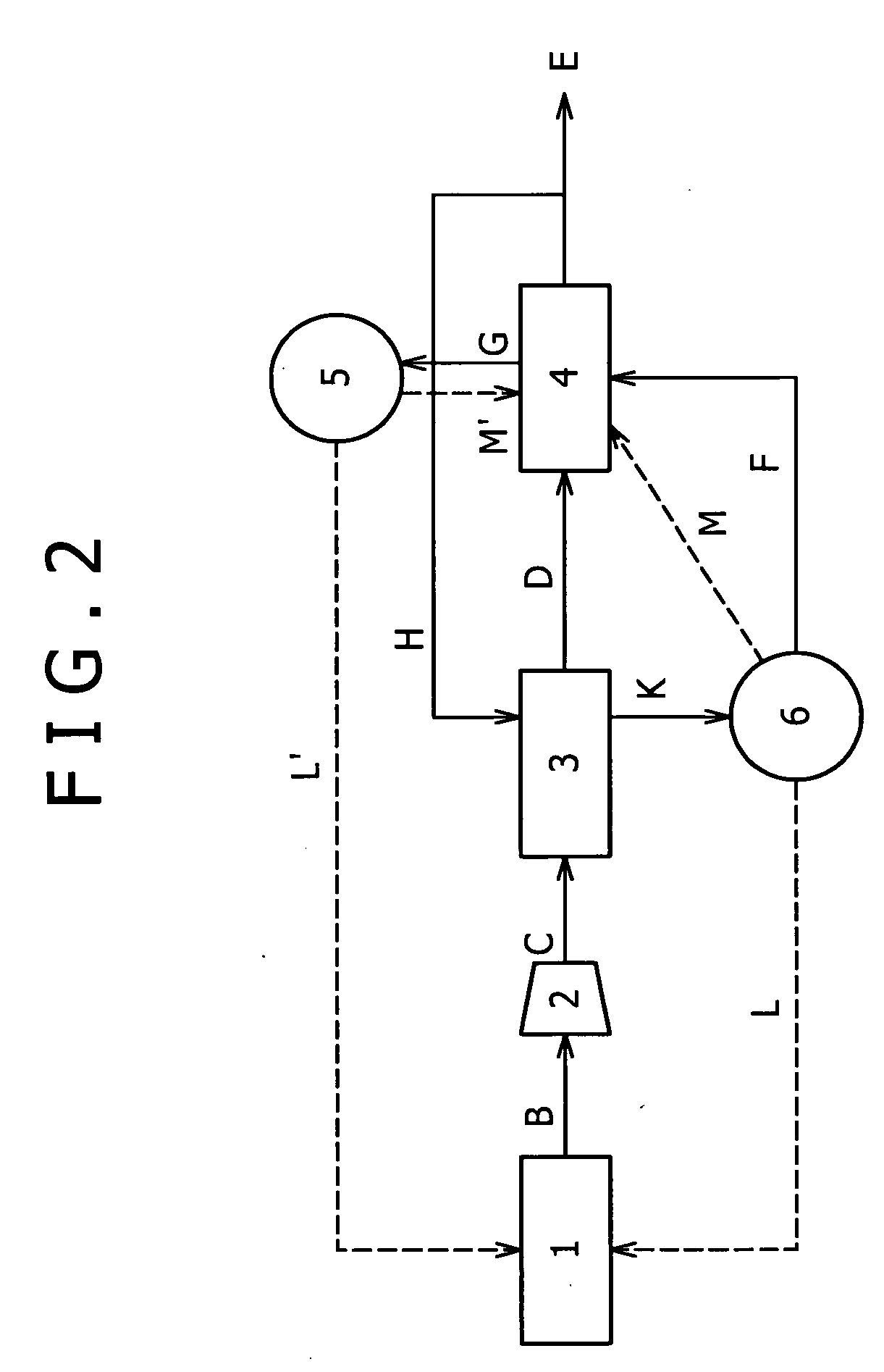Method of Producing High-Purity Hydrogen
a high-purity hydrogen and purification technology, applied in the direction of hydrogen separation using solid contact, dispersed particle separation, separation process, etc., can solve the problem of energy dependency, difficult to use this technique as a purification technique to yield such a high-purity hydrogen, and the known hydrogen psa process requires very large-scale facilities (very large-scale adsorption towers). the effect of low cost and small production system
- Summary
- Abstract
- Description
- Claims
- Application Information
AI Technical Summary
Benefits of technology
Problems solved by technology
Method used
Image
Examples
embodiment 1
[0097]One of embodiments is shown in the flow chart of FIG. 1 by way of example. In FIG. 1, the numeral 1 represents a reforming unit 1 that reforms a reformable raw material to yield a hydrogen-rich reformed gas; the numeral 2 represents a compressor 2 that compresses the reformed gas to yield a compressed reformed gas; the numeral 3 represents a pressure swing adsorption (PSA) unit 3 that removes unnecessary gases other than carbon monoxide from the compressed reformed gas by adsorption to yield a carbon monoxide-containing hydrogen gas; and the numeral 4 represents a carbon monoxide remover 4 that is packed with a carbon monoxide adsorbent to remove carbon monoxide from the carbon monoxide-containing hydrogen gas by adsorption.
[0098](Reforming Step)
[0099]In a reforming step according to the present invention, a reforming unit 1 including a common steam reformer and a common shift reactor in combination may be used. A reformable raw material A containing hydrocarbons, such as natu...
embodiment 2
[0117]Another embodiment is shown in FIG. 2. Embodiment 1 illustrates an embodiment in which the part F of high-purity hydrogen is initially circulated in the carbon monoxide remover 4 to regenerate the carbon monoxide adsorbent, and the offgas (carbon monoxide adsorption tower offgas) G thereof is circulated in the PSA unit 3 to regenerate the PSA adsorbent (FIG. 1). With reference to FIG. 2, Embodiment 2 illustrates an embodiment in which the order of circulation is changed; a part of high-purity hydrogen H is initially circulated in the PSA unit 3 to regenerate the PSA adsorbent; and an offgas (PSA tower offgas) K thereof is circulated in the carbon monoxide remover 4 to regenerate the carbon monoxide adsorbent. The hydrogen recovery can be prevented from lowering according to the present embodiment as in Embodiment 1, except for regenerating the carbon monoxide adsorbent using the PSA tower offgas K instead of the high-purity hydrogen E.
[0118]The PSA tower offgas K can be used a...
embodiment 3
[0120]Yet another embodiment is shown in FIG. 3. The present embodiment (Embodiment 3) illustrates an embodiment in which a part F of high-purity hydrogen is used for regenerating the PSA adsorbent as in Embodiment 2, but the regeneration of the carbon monoxide adsorbent is conducted by circulating a PSA tower offgas K as a regeneration primary cleaning gas F1 and another part of high-purity hydrogen E as a secondary purge gas F2 sequentially in the carbon monoxide adsorption tower.
[0121]According to Embodiment 3, a product hydrogen with a further higher purity can be obtained as compared with Embodiment 2. This is because the product hydrogen (high-purity hydrogen) E is used as a secondary purge gas F2, and, by carrying out finish cleaning with the high-purity hydrogen free from impurities, the carbon monoxide adsorbent can be further highly regenerated, although the entire hydrogen recovery is lowered.
PUM
| Property | Measurement | Unit |
|---|---|---|
| purity | aaaaa | aaaaa |
| adsorption | aaaaa | aaaaa |
| concentration | aaaaa | aaaaa |
Abstract
Description
Claims
Application Information
 Login to View More
Login to View More - R&D
- Intellectual Property
- Life Sciences
- Materials
- Tech Scout
- Unparalleled Data Quality
- Higher Quality Content
- 60% Fewer Hallucinations
Browse by: Latest US Patents, China's latest patents, Technical Efficacy Thesaurus, Application Domain, Technology Topic, Popular Technical Reports.
© 2025 PatSnap. All rights reserved.Legal|Privacy policy|Modern Slavery Act Transparency Statement|Sitemap|About US| Contact US: help@patsnap.com



